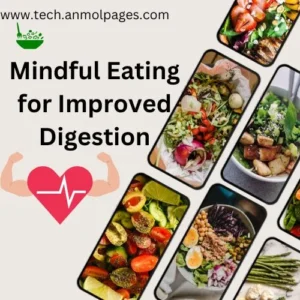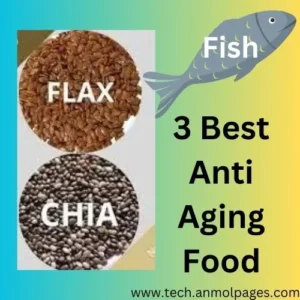Feasting vs. Fasting-When you consume anything in excess, it will end up being stored as fat. We don’t have storage for protein, so when you eat more than your body needs, it is converted to fat for storage. Carbohydrates can be stored as glycogen, but when glycogen stores are full, the remainder is converted to fat as well. Therefore, any excess intake is converted to fat. Now, let’s take a look at how this process occurs.
Mindful Eating for Improved Digestion | Mindful Eating for Healthy LifeStyle

Feasting vs. Fasting | Nutrient Metabolism | Fat Storage | Fasting Effects
When you examine the metabolic pathway, you’ll notice that the conversion from acetyl-CoA to fatty acids is reversible, indicating that anything that can become acetyl-CoA can also be converted into fatty acids. For glucose, it typically follows the pathway from glucose to pyruvate to acetyl-CoA and then enters the TCA cycle. However, if there’s more glucose than the body needs or can store, instead of continuing down the TCA cycle, it shifts to the right and is converted into fatty acids. The same principle applies to proteins; amino acids can become acetyl-CoA, which then can be converted to fat.
Healthy Breakfast Habits | Top 10 Breakfast Foods | Power Up Your Morning | 10 Essential Foods

When it is in excess, on the other end of the spectrum, we have fasting. Fasting is when we don’t have enough nutrients. Remember, we said that your body will primarily use glucose for fuel, as that’s what the body prefers for energy. So when glucose starts to deplete in your bloodstream because you’re not eating, your body will turn to your glucose stores, which is glycogen, and begin to use it for fuel. However, eventually, those glycogen stores will start to run low, leading us to look at what happens next.
When you start to run out of glycogen stores, your body will need to find another way to fuel itself. This is a review of what we’ve discussed before. Most of the body can run off ketones, which are made from fat. The brain and red blood cells specifically need glucose. If you run out of glucose, your body will need to find a way to make it. If you’re fasting, we’re assuming that you’re not supplying your body with glucose, so it will have to produce its own.
3 Best Anti Aging Food | 3 Amazing Superfoods | Mindful Eating

If we need to make our own glucose, let’s look at what our options are. If we can use fat to make glucose, that will always be our first choice. In previous chapters, we mentioned that we don’t like to use protein for fuel or to make glucose unless it’s our body’s last resort. This is because we don’t have excess protein stored in our body, so there’s no extra protein to convert into glucose or fuel. Instead, the body would have to break down its own muscles or other tissues made of protein to create glucose or fuel, which is not ideal. Therefore, if we can avoid using protein, we will always choose to avoid it.
So, we first look at our fats to see if that is an option. Remember, our fats are made of triglycerides, which are most of the fat that comes from our diet. Triglycerides consist of one glycerol and three fatty acids. We know that glycerol enters the metabolic pathway just before pyruvate, meaning that glycerol can technically be used to make glucose. So, we could use that part of our fat to produce glucose. However, fatty acids enter at acetyl-CoA, where the process is not reversible, so fatty acids cannot be used to make glucose.

Given that triglycerides are composed of one glycerol and three fatty acids, only a small part of the fat can be used to make glucose, as the majority of the fat is made of fatty acids, which cannot be converted into glucose. Because of this, the body won’t be able to meet its glucose demands just by using fats, as only a small portion of the fats—the glycerol portion—can be used to produce glucose. Most of the fat structure, the fatty acids, cannot be used to make glucose.
We can make a little bit of glucose using the glycerol unit that’s in our fat structure, but that’s not going to be sufficient enough to keep up with our body’s demands. So, at this point, we are desperate and will have to turn to our protein structures to make glucose instead. Remember, we have some amino acids that are glucogenic and some that are not. Our glucogenic amino acids will be used in this situation because they are capable of making glucose. For example, some amino acids can enter at pyruvate, meaning they can still be converted back into glucose.

To recap, when we need to make our own glucose, we can technically do that with part of the fat—the glycerol part—but that is only a very small portion and not enough to keep up with the body’s demands. As a result, we are forced to rely on our last resort, which is breaking down our own body structures to extract the protein and use the glucogenic amino acids to make glucose.
Now, that was how we would make glucose for the parts of the body that can only run on glucose. But remember, most of the body can actually run on something called ketones. Ketones are made by combining two units of acetyl-CoA. It’s important to note that all of our nutrients can make acetyl-CoA, which means they can all make ketones. However, we won’t be using glucose to do that because if we had glucose, we would use it directly for fuel. The reason we’re making ketones is that we don’t have enough glucose available.
This leaves us with proteins and fats as options to make acetyl-CoA and ketones. Proteins are our last resort because using them for fuel means breaking down our muscles. If there’s another option, we’ll choose that first. Right now, fat is a viable option. Our dietary fats, in the form of triglycerides, are made of glycerol and fatty acids. Glycerol can be converted to acetyl-CoA and used to make ketones, while the fatty acids can also produce acetyl-CoA. Thus, all parts of the triglyceride structure can be used to make ketones.
Fatty acids, in particular, can produce large amounts of acetyl-CoA, making them a great source of ketone production. This provides enough fuel for the body, so we don’t need to rely on protein. These proteins are called ketogenic because they can be used to make ketones, thanks to their ability to produce acetyl-CoA. This explains why they are referred to as ketogenic.
When we consume excess nutrients, particularly carbohydrates, fats, and proteins, the body first uses what it needs for immediate energy and stores the rest. Glucose from carbohydrates is partially stored in glycogen reserves, and any excess is converted to fat. Similarly, some amino acids from proteins are used to build body proteins, while the rest are stored as fat.
In contrast, during short-term fasting, which occurs between meals, the body relies on its glycogen stores from the liver and muscles to release glucose for energy. The body also begins to use fat to fuel cells that don’t require glucose, conserving glucose for essential functions. Protein is not used during short-term fasting because the body avoids breaking down muscle tissue unless absolutely necessary.
However, during long-term fasting, typically around 24 hours without food, the body exhausts its glycogen stores and must find alternative energy sources. At this point, the body starts breaking down muscle tissue to release amino acids, which are then converted into glucose. Some amino acids that are not glucogenic are converted into ketones. Fats are also broken down into ketones, which become the primary fuel source for the body’s cells that do not require glucose, helping to sustain energy levels during prolonged periods without food.
